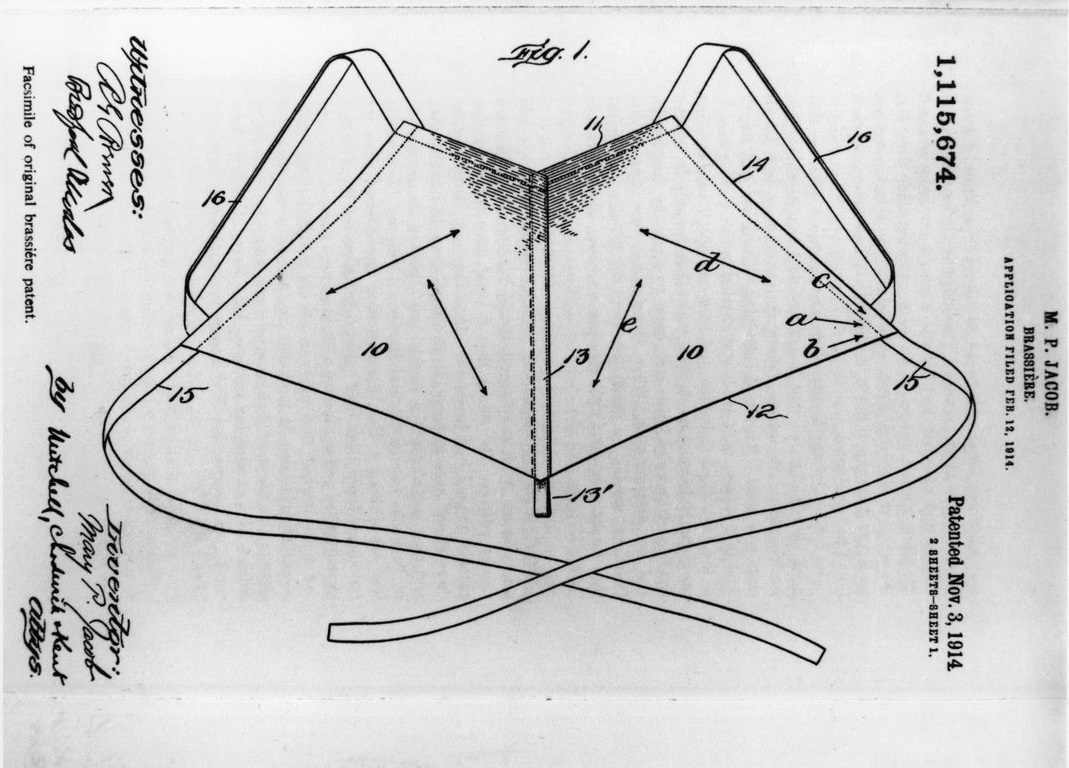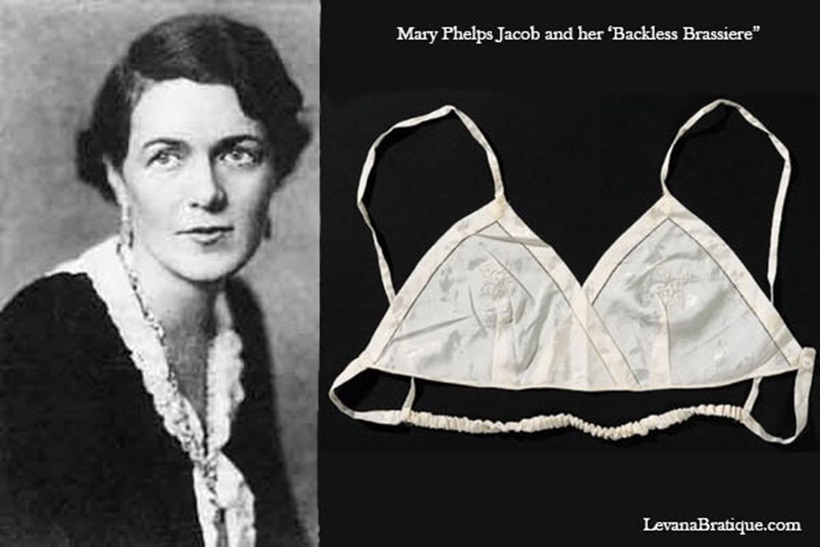The First Bra Was Made of Handkerchiefs
Sun 03 November 2019:
One hundred years ago today, Mary Phelps Jacobs received a patent for the garment she had invented while preparing to go to a dance.
The bra was not invented on November 3, 1914. Women have been binding and otherwise supporting their breasts for, literally, ages; the first bras may well date back to ancient Greece, where women would wrap bands of fabric across their chests, tying or pinning them in the back.

And the “brassiere,” as a widespread concept—the word comes from the French for “upper arm”—is generally thought to have originated with the DeBevoise Company, which used the term in advertisements for its whale-bone-supported camisoles. (French, then as now, had a certain je ne sais quoi with English-speaking consumers.) Vogue began talking about brassieres in 1907; in 1911, the word merited an entry in the Oxford English Dictionary.
But the bra—the garment that lifts and separates, via cups and straps—became part of the world, officially, on November 3, 1914. That was the day the United States Patent and Trademark Office granted a patent to Mary Phelps Jacobs for the garment she called a “brassiere.”
The necessity that drove Jacobs’s invention came down, in this case, to the fashion trends of early-20th-century America. The dresses of the time were cut for slim and boyish figures; they featured, on top of that, plunging necklines. This combination was, for the well-endowed Jacobs, awkward. While preparing for a Manhattan debutante ball in 1913, the 19-year-old became frustrated.
Not only was the sleekness of her sheer evening gown compromised by her bulky corset; the undergarment also had a pesky way of rejecting the “under” aspect of things. “The eyelet embroidery of my corset-cover kept peeping through the roses around my bosom,” Jacobs recalled in her autobiography, The Passionate Years.
Again: awkward.

So the young socialite MacGyvered her way into lingerie. “Bring me two of my pocket handkerchiefs and some pink ribbon,” she told her maid. The two did some quick sewing. Jacobs tried on the resulting garment. When the ribbons were pulled taut and tied, the effect was similar to what was achieved with a corset—but, given the absence of whale bones, much sleeker. (Not to mention, obviously, much more comfortable.) The new undergarment, Jacobs recalled, “was delicious. I could move more freely, a nearly naked feeling, and in the glass I saw that I was flat and proper.”
Jacobs wore her invention to the dance that night. She went on to demonstrate it around the dressing rooms of Manhattan’s society gatherings. She made more models of it—using elastic bands—for friends. Soon, she went to see a patent attorney. On February 12, 1914, Jacobs filed for a patent. On November 3 of that year, she received one.
The benefits of the new garment, Jacobs’s patent application explained, extended far beyond fashion. The bra, she argued, would allow women the freedom of movement that corsets had long prevented. Specifically, she wrote,
It is among the objects of the present invention to provide a garment in which a number of features of novelty and utility are combined, among which are the provision of a garment which has no back and therefore does not interfere with any design of evening gown that may be chosen; one which is capable of universal fit to such an extent that for commercial handling it need be made in but few sizes, with reasonable certainty that the size and shape of a single garment will be suitable for a considerable variety of different customers; and to provide a garment which is characterized by extreme simplicity by freedom from bones so that it may be finished with laces or embroideries for wear beneath a sheer waist or diaphanous gown, and which when worn is both comfortable and cool and so efficient that it may be worn even by persons engaged in violent exercise such as tennis; and which has other advantages that are characteristic of the invention herein set forth.
The main advantage? The bra, Jacobs noted, “does not confine the person anywhere except where it is needed.”
Think your friends would be interested? Share this story!





